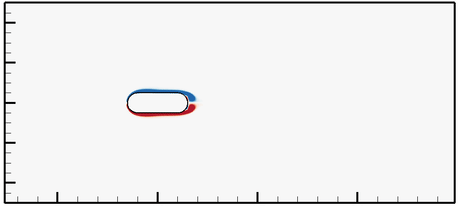Aeroelastic Flutter
Aeroelastic Flutter
Aeroelastic flutter, defined as “an unstable, self-excited structural oscillation at a definite frequency where energy is extracted from the airstream by the motion of the structure”, is ubiquitous in a wide range of engineering fields. In applications that rely on the structural integrity of flexible bodies, flow-induced motion is a significant cause for concern due to its role in driving the dynamics of the structure. While being detrimental in a wide range of such applications, flutter is simultaneously seen as a possible method of harnessing energy from naturally occurring flow fields, such as tidal currents, due to its ability to extract energy from the surrounding flow. Hence the ability to suppress as well as enhance flow-induced motion is a problem of broad relevance.
The primary objective of our work to understand the effect of aeroelastic flutter on lift-generating surfaces and its consequences in aeronautical applications. While controlling wing flutter has historically been a challenge in wing design, recent thrusts towards efficient, lighter designs poses new problems in terms of the structural integrity and airworthiness of long-range endurance aircrafts, MAVs, UAVs and even modern conventional aircrafts. Hence understanding these issues as a nonlinear, coupled fluid-structure problem is a focus of our group. To this end, we are using numerical simulations based on an Immersed Boundary Method, along with other numerical tools to analyze the fluid flow and dynamics of aeroelastic flutter.
Collaborators : Joseph Katz and Jibu Tom Jose (JHU)
